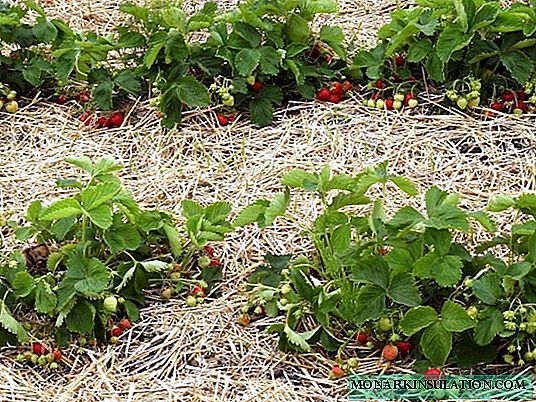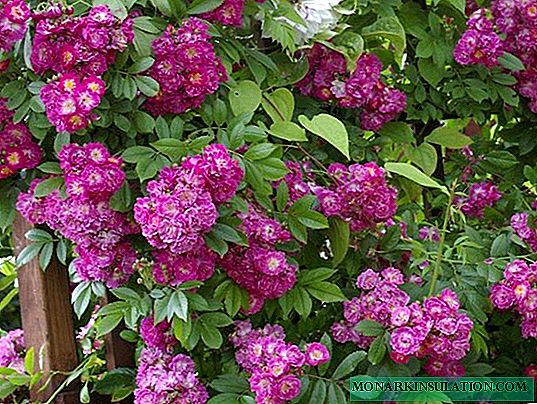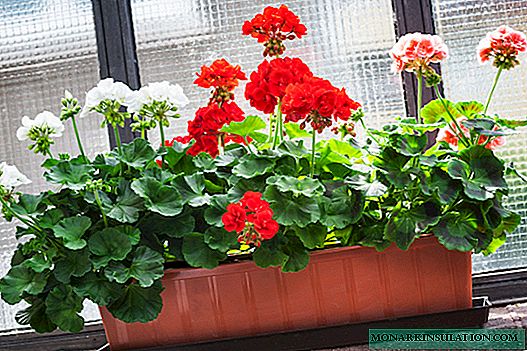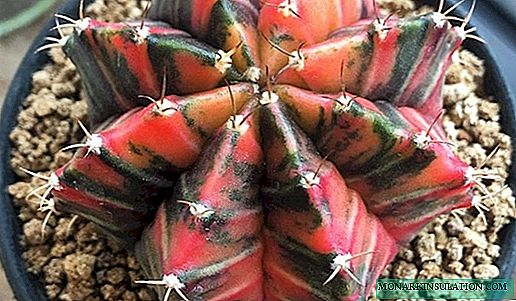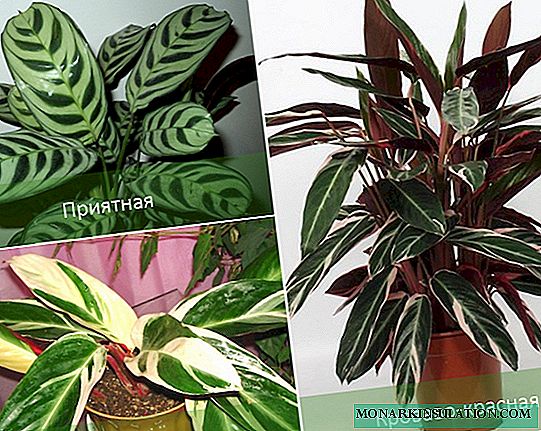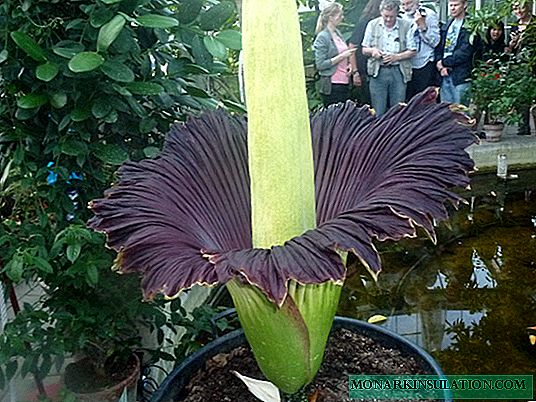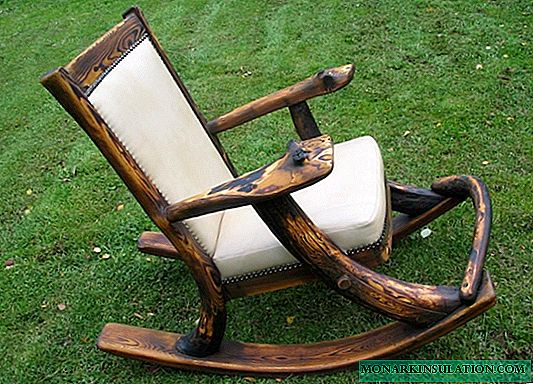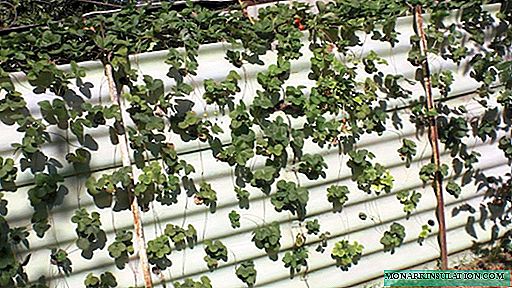
In a typical planting, strawberries (garden strawberries) occupy significant areas. And caring for her, including harvesting, is one of the most time-consuming and inconvenient among all garden crops. Therefore, many are interested in alternative methods of landing - on high ridges, on squares covered with mulching film with slots, on racks. One of the best, according to the already accumulated experience of gardeners, is a vertical method of planting.
Types of Vertical Beds
The most difficult thing with this method of landing is to make a supporting structure. This task is not agronomic, but construction, even architectural or design. First you need to choose the option that is right for you. There are already dozens of them, and over time there will be even more.
All designs can be divided into three types:
- pots, clipped plastic bottles or cans, flower pots, located one above the other;
- vertically standing pipes with cut windows;
- pyramidal racks.
All three types are fundamentally different from each other, so each requires a detailed consideration.
Pots and planters over each other
They can be positioned as you like:
- putting on each other;
- hanging on walls, poles and any other vertical surfaces.
The first way, as a rule, is planted a little strawberries - for yourself and for beauty. The only requirement is that the plants should be well lit and not obscure each other. However, with such a planting, some of the plants inevitably appear in the shade, moreover, the cost of the pots increases the cost of the crop.

Placing strawberries in pots is more suitable for decorating a site than for a large crop
The super-efficient use of expensive greenhouse space is to grow strawberries in flower pots hung on racks. The output of 1 sq. Km. m increases many times in comparison with conventional horizontal methods. This man-made miracle looks like a strawberry tree.

When growing strawberries in pots, hung on racks, saves space in the greenhouse
In the same way, garden strawberries are grown without shelter. Manually watering such a tall structure is very difficult. Therefore, it provides hoses for automatic drip irrigation.

For strawberries located on vertical racks, drip irrigation is used.
Pipe fit
Planting strawberries is carried out in vertically and horizontally arranged pipes (in the latter case, they are fixed on a vertical wooden or plastic frame). The method has its advantages over planting in pots and planters:
- quite a few bushes can be planted in one pipe, so you do not need a large number of separate containers;
- easier to organize watering.
Strawberries in pipes are grown more often in a greenhouse, while industrial pipes are used.

Garden strawberries planted in pipes are easier to water
At home, such designs are made of relatively inexpensive plastic pipes for sewage and ventilation with a diameter of 18-25 cm. The holes are cut using a crown nozzle.

For cutting holes in a plastic pipe, the power of a screwdriver on batteries is enough
When landing in horizontally located pipes, a frame is required. It can be made from wooden bars or iron racks. There are prefabricated plants with an automatic watering system.

Vertical fit in horizontally positioned pipes
If desired, a similar design can be done with your own hands, and as a frame to use the simplest option - a metal fence. An irrigation system with a pump can be purchased separately or replaced with drip irrigation.
- Holes are cut in a pipe with a diameter of 20-25 m at a distance of 20-25 cm using a drill with a crown nozzle, their edges are trimmed with a special knife.
- Drainage, fertile soil mixed with vermiculite and fertilizers is added to the holes.
- Plant strawberry seedlings.
- Fix the pipe to the fence using thick wire or special tape.
Video: making the simplest design for planting strawberries in a pipe
Watering garden strawberries in a horizontal pipe can be arranged using a regular five-liter plastic bottle:
- In the cork of the bottle, one or two holes are drilled for a slow drain of water. If the hole is too large and the water goes quickly, the plug can be replaced and the hole made smaller.
- The bottom of the bottle is cut to fill the water in place. You can not cut, but simply remove the bottle, pour and put in place. But then the same hole is drilled in the bottom as in a cork, otherwise a vacuum will form in the tank and the water will not come off.
Such a pipe-bed should be installed with a slope of several degrees with a decrease from the canister of water, so that the water can gravity soak the soil. It is easy to check the slope with the usual building level or by pouring a little water into an empty pipe - it will flow throughout the pipe if there is a slope.

A five-liter bottle for watering a single garden bed-pipe with strawberries will last for a long time
Pyramidal landing
The pyramidal or step method resembles landing on mountain terraces. Most often, such pyramids are made of wood.
Photo gallery: types of pyramidal beds for garden strawberries
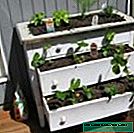
- A pyramidal bed for strawberries can even be made from an old chest of drawers
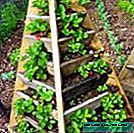
- The optimal height of the pointed pyramid for planting garden strawberries is not higher than human height
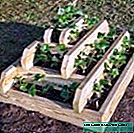
- In combination with other design elements, a step pyramid for strawberries can look good in the landscape
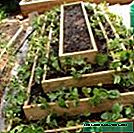
- On a long pyramidal bed you can place many strawberry bushes
Benefits:
- the design greatly simplifies maintenance, saves area;
- easy to do with your own hands. The material is quite accessible - scraps of boards, industrial waste, dismantled construction pallets, etc .;
- the tree provides the most favorable regime in the ground - it passes air and moisture, the roots "breathe" well and never rot. At the same time, the tree is able to swell and accumulate moisture, therefore, in a wooden container, the soil is more optimal in moisture than in plastic and other materials.
Minuses:
- automatic watering is not provided, so you will have to water either with a hose or manually from a watering can;
- a tree in contact with the earth will rot in 4-7 years, depending on the breed, humidity and activity of putrefactive bacteria.
The pyramid for strawberries made of oak rotts slightly on the surface from the ground, but can serve for decades.
Antiseptics should not be treated with wood. Although any antiseptic protects the tree by destroying the entire bacterial environment, it is always extremely harmful to all living things, and sometimes just poisons. You can protect the tree well by soaking it with hot oil on vegetable oils, a solution of copper or iron sulfate - there will be no harm to the plants from these preparations.
Planting strawberries in car tires is not recommended. They contain a wide variety of toxic substances, which are especially actively released when heated in the sun, and over time, unpredictable chemical reactions begin in old tires.
Other vertical landing methods
There are other methods of vertical planting of garden strawberries, for example, planting in a "false fence" from corrugated board. With this method:
- Holes are made in the corrugated slate using a diamond-coated crown nozzle.
- Attach the slate to the main fence at a distance of 30 cm using metal pipes.
- They fill the entire structure with fertile soil.
- Plant strawberries in the holes.
- Provide the necessary drip irrigation every day and top dressing.
Video: an unusual way to grow strawberries vertically
General rules for vertical landing
The requirements for all types of vertical landing are the same. They are much the same as on ordinary plantations, but there are some differences.
Lighting
Strawberries are located in a well-lit place, bushes should not obscure each other. Although the berry tolerates slight shading - for a short time (for example, in the morning or in the evening) or in the diffuse shadow of a rare crown of a tree. But the more sun and heat - the more sugars in the berry and the better the taste. And in the shade, the berry is sour and small.

The more sun, the sweeter the strawberries
Necessary amount of land and watering
Having chosen the type of planting, you need to know the nutrition area and the amount of soil that each individual strawberry bush needs in any vertical type construction. This is about 3-5 liters of soil, or the volume of the pot is 18-20 cm in diameter and 20-25 cm deep - it is at this depth that the main root system of strawberries is located during normal planting on the ground.
During drought, in search of moisture in adult plants, the roots can go down to a depth of half a meter, and in a limited capacity the plant is always more dependent on watering than on the ground. In a man-made design, watering should be provided, as they say, by default.
The amount of soil per bush can be reduced to 2 l, if:
- strawberries are planted for one to two years;
- the soil is composed correctly, nutritious and balanced, with the addition of vermiculite.
With insufficient nutrition, the plant will develop and bear fruit, but not at full strength.
Soil characteristics
The soil in the garden lives in natural biogenesis, replenished with nutrients due to worms, decayed residues, a natural bacterial background. Soil for a closed volume is created artificially, so it is extremely important to do it right.
Dozens of recipes have been developed, but the main soil requirements are as follows:
- friable, friable, not too moisture-consuming to avoid root decay;
- slightly acidified, with a pH of 6.0-6.5;
- fertile.

The soil in the designs for the vertical planting of strawberries should be loose and crumbly
The fertility of even the smallest soil is guaranteed to provide the addition of 5 liters of humus from completely rotted manure or compost and 0.5 liters of wood ash per 10 liters of land.
Top dressing
If the strawberry does not develop well, it is fed during the growth process by adding 10-15 g per 10 l of water to the water for irrigation with ammonium sulfate (ammonium sulfate). This is a fertilizer with a nitrogen content of about 20%. It is applied exclusively to the ground; contact with the leaves may cause a burn. Increases the endurance of strawberries, increases the number of flowers and ovaries. You should not be afraid of nitrates in berries at such a dosage - the dose will be quickly processed by the plant into fructose and sucrose, which improves the taste of the berries.

Special fertilizer for strawberries increases the number of flowers and ovaries
Features of adding land to vertically standing pipes
A significant difference is only when landing in vertically standing pipes. The earth in them is filled up from above. First up to the first lower window. Then a bush is planted in it, the earth is filled up further, until the next window. The next bush lands, again falls asleep, and so on to the top. The main requirements are not to fill the leaves and the rosette (its core should be in the same plane with the soil) and not leave the roots bare.
Planting material for vertical beds
For vertical beds use:
- rooted mustache
- adult bushes
- strawberry seedlings.
Rooted mustache
Immediately after fruiting, strawberries on ordinary plantations let out a mustache. Sometimes they themselves, touching the loose moist earth, form roots. And to obtain a large amount of planting material, the mustache is intentionally sprinkled with earth. By August, rooted mustaches become full planting material. They can already be planted in vertical structures at this time, so that they manage to take root well until next spring.

Immediately after fruiting, the strawberry starts a mustache that takes root in the ground.
You can plant last year's rooted mustache in the spring. In any case, the first harvest will be only next year, and this is a big minus of this method. Costly in terms of labor and cost, the design will work idle for a year. The exception is the repair strawberry. She can begin to bear fruit by the end of the season of the first year.
Adult bushes
There is experience when, especially for the cultivation of planting material in vertical structures, an ordinary strawberry plantation is kept. It can grow with a continuous carpet even without much care and reckoning on the crop, but from there you can always dig and transplant an adult bush into vertical structures. If you transplant a bush from a regular plantation in early spring, it will yield a crop already this year. Strawberries need to be dug up with a lump of earth, trying not to damage the roots, and without delay, on the principle of "from the ground immediately to the ground." And then the first harvest will be this summer.
Seedlings
If you plant your favorite sort of garden strawberry seeds in December or January, and in the spring plant the seedlings in a vertical structure, the crop will be in the first year. If you plant the seeds later, the crop will have to wait an extra year (except for the remontant strawberries). In spring, you can also buy ready-made seedlings in nurseries and specialty stores. But then you must definitely ask the sellers what kind of variety it is, how it is propagated, by seeds or mustache, what age, and so on.

Strawberry seedlings for planting in vertical structures must be strong and healthy.
Pros and cons
Pros:
- significant space savings;
- the opportunity to create ideal conditions for growth and get high yields;
- simplicity in leaving, convenient ergonomics of work - it is not necessary to bend down;
- berries do not touch the ground, do not rot and are always clean;
- no weeds and slugs.
Minuses:
- great dependence on artificial irrigation, top dressing and the quality of the compounded soil;
- Immediately you need to provide for the upcoming wintering of plants. The cache-pot and pots, wooden boxes, small removable pipes can be brought in an outbuilding. In the greenhouse, they winter without any problems. But bulky and heavy structures will either have to be sheltered for the winter, or each year a new seedling of those varieties that can bear fruit in the first year will be planted.
Varieties and types of strawberries for vertical planting
It is undesirable to plant strawberries in a vertical way, requiring a larger volume of soil (varieties with a powerful bush, intensive growth, designed for 3-4 years of growth). Ampel bushes of garden strawberries are great for pipes and pyramids. Experienced gardeners also recommend varieties:
- Queen Elizabeth is a hardy and unpretentious variety that is resistant to many diseases. Fruits in June to early October. One bush can produce from 1 to 2 kg of berries;
- Alba is an early variety. Hardy, fruits are sweet, almost without acidity. Berries are well tolerated and stored fresh better than many other varieties. It can yield up to 1 kg per bush;
- F1 homemade delicacy is a remodeling ampel variety. Berries with sourness, rather large, up to 3 cm in diameter. Long peduncles are located close to each other, because of which the berries hang tight, which looks very beautiful.
Photo Gallery: Strawberry Varieties for Vertical Growing

- Strawberry variety Queen Elizabeth - hardy and unpretentious

- Strawberry Variety Home Delicacy F1 - Repairing

- Strawberry variety Alba - winter hardy
But with the modern variety of varieties, of course, you can pick up other options.
Reviews
I have strawberries wintering in plastic boxes in a greenhouse, in April bloomed, despite the terrible weather - I am in the Leningrad Region. I choose a method of vertical cultivation, while the problem is in watering vertical beds.
Alenad47 St. Petersburg//www.asienda.ru/post/29591/
The experience of my neighbor in the country observed last summer. Negative. In a polycarbonate greenhouse 8 × 3 above the tomatoes, they hung a half pipe made of polypropylene and planted strawberries in it - they wanted, as in the picture, the mustache to hang directly from the berries. I warned that drip irrigation was needed. And, despite the cold summer and airing from the two doors of the greenhouse, of course, the strawberries dried out. In the upper part of the greenhouse it is very hot, and although the neighbor was watering the berries, they were raiding in the garden. At the end of summer there was a herbarium.
Oksana Kuzmichyova Kostroma//www.asienda.ru/post/29591/
Hydrogel to help you and grow in pleasure. But what to do with this strawberry in the winter is a big question. If only a pipe with seedlings is brought into the greenhouse and covered. I want to try in sewer pipes. Vertically. Little space in the garden.
Omniscient//otvet.mail.ru/question/185968032
As you can see, there are many types of vertical strawberry cultivation - from the most advanced to the primitive. In any case, this method can be considered more promising than on ordinary plantations, simply because it many times increases the yield per unit area. It requires labor and costs for the manufacture of structures, but then for a long time and significantly facilitates the work. If desired, everyone can try to grow strawberries vertically.









